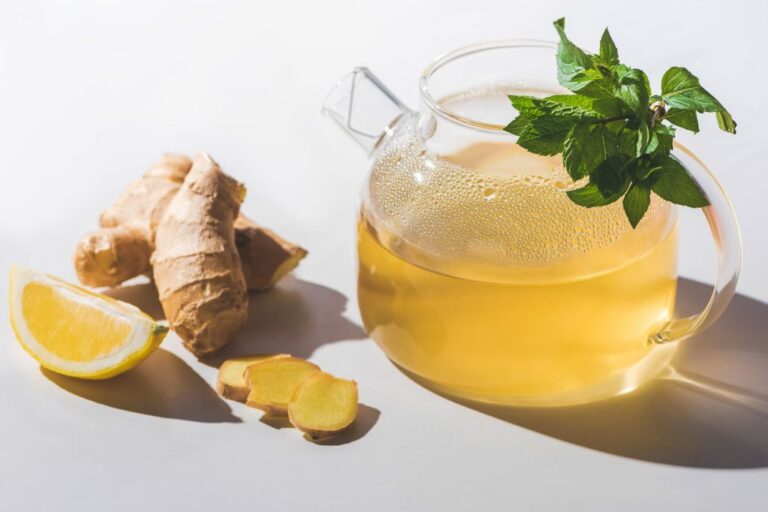Best Way to Build a Hypertension-Friendly Food Prep Kit That Works
If you’ve ever stared at your pantry wondering what’s actually “safe” for blood pressure—and what’s going to sneak in extra sodium—you’re definitely not alone. As an internal medicine physician working in hypertension management, I’ve heard that same frustration from countless patients over the years. So let’s make it easier. If you’re wondering how to build a hypertension-friendly food prep kit that’s both practical and heart-healthy, you’re in the right place. And no, this isn’t about buying fancy health food you’ll never eat. This is about realistic, sustainable prep that makes managing your blood pressure feel less like a chore and more like a smart routine you can actually enjoy.
Why Having a Hypertension-Friendly Food Prep Kit Matters

Think of your food prep kit as your personal blood pressure sidekick—it’s not just about meals, it’s about empowerment. I’ve seen so many patients struggle not because they don’t *want* to eat better, but because when the fridge is empty and the day is long, grabbing takeout feels like the only option. Having a go-to kit at home can flip that whole equation.
And here’s the thing: this doesn’t have to be complicated. It’s about having the right ingredients and tools at your fingertips, so you can build meals that are low in sodium, rich in potassium and magnesium, and aligned with DASH diet principles without having to overthink it every time you cook.
What Should Be in a Hypertension-Friendly Food Prep Kit?

1. Pantry Staples That Pull Their Weight
Your pantry is ground zero for quick, healthy meals—if it’s stocked smartly. Here’s what I always recommend patients keep on hand:
- Low-sodium canned beans: Black beans, chickpeas, lentils. Rinse before using to slash sodium even more.
- Whole grains: Quinoa, brown rice, farro, or whole wheat couscous. They keep well and cook fast.
- No-salt-added canned tomatoes: A must-have for soups, stews, or homemade sauces.
- Herbs and spices: Garlic powder, smoked paprika, turmeric, rosemary, thyme—flavor without the salt.
- Healthy oils: Olive oil or avocado oil for heart-healthy fats.
2. Fresh and Frozen Produce that Earn Their Keep
Produce doesn’t have to be complicated. I always tell patients: frozen is just as good as fresh (sometimes even better when nutrients are sealed in!).
- Leafy greens: Spinach, kale, arugula. Throw them into eggs, grain bowls, or smoothies.
- Berries and citrus: Antioxidant-rich and great for adding brightness to meals without extra sugar.
- Frozen veggies: Broccoli, mixed stir-fry blends, edamame—keep a mix for quick sides.
- Avocados: They don’t last long, but when they do, they’re potassium-rich and creamy enough to be satisfying.
3. The Right Proteins
Protein is key for satiety, but not all sources are created equal when it comes to blood pressure. Here’s where I guide folks:
- Skinless poultry: Bake or grill in batches for easy meals all week.
- Fish (especially fatty types like salmon): Omega-3s help reduce inflammation and support heart health.
- Tofu and tempeh: Versatile, affordable, and soak up flavors well.
- Unsalted nuts and seeds: Almonds, walnuts, chia, flax. Add crunch to salads or oats.
Tools That Make Food Prep Simple (So You’ll Actually Stick With It)

Now let’s talk gear. It’s not about having a fancy chef’s kitchen—it’s about efficiency. These are the tools I swear by, both at home and when coaching patients:
- Meal prep containers: BPA-free, glass if possible, and compartmentalized to portion out balanced meals.
- Digital food scale: Great for understanding true portions, especially with grains and proteins.
- Instant pot or slow cooker: Set it and forget it—perfect for soups, stews, beans, and lean meats.
- Spice grinder or mortar and pestle: Bring your flavor game up without relying on salt.
Here’s what I’ve noticed: when someone has these tools within reach, they’re way more likely to follow through. Because prep becomes less of a hassle, and more of a flow.
How to Plan a Week of Blood Pressure-Friendly Meals (Without Losing Your Mind)

Okay, you’ve got your pantry stocked, freezer ready, and tools lined up—now what? It’s time to pull it all together into a weekly plan that actually works for your schedule and your blood pressure goals. I always tell my patients: don’t aim for perfection, aim for consistency. If you’ve ever felt burned out by “Pinterest-perfect” prep routines, you’re not alone. Real life is busy. Meal planning should feel like a support system, not another job.
Start With a Flexible Template
Here’s a little trick I’ve seen help over and over—pick a loose theme for each day of the week. Something like this:
- Monday – Grain Bowls: Brown rice + grilled chicken + roasted veggies + avocado + tahini drizzle.
- Tuesday – Taco Night: Ground turkey lettuce wraps with black beans, salsa, and corn.
- Wednesday – Slow Cooker Stew: Lentils, carrots, sweet potatoes, garlic, herbs.
- Thursday – Stir Fry: Tofu or shrimp + frozen veggie mix + low-sodium tamari over quinoa.
- Friday – Fish & Veggies: Baked salmon + sautéed spinach + whole grain couscous.
This gives you structure *and* variety, without the daily guesswork. And because you’ve already prepped ingredients (remember those pantry staples and proteins?), you’re halfway there before you even start cooking.
Batch Cook Like a Boss
Batch cooking isn’t just for the super-organized. It’s honestly what helps many of my patients finally stick to lower-sodium, DASH-style eating. Set aside a few hours—Sunday afternoon works great for most—and cook a few core components:
- A big pot of quinoa or brown rice
- Two proteins (chicken breast, lentils, or tofu)
- Roasted mixed vegetables
- Hard-boiled eggs for snacks
- Simple sauces like garlic-herb olive oil or avocado-lime yogurt
I like to say: “Cook once, eat five times.” This is how you win the week, even if Tuesday turns into a whirlwind of work calls, errands, and ‘I forgot to defrost anything’ panic.
Storage Tips So Your Prep Kit Actually Lasts

Ever open your fridge to find wilted greens or mystery containers you meant to eat days ago? Yeah… we’ve all been there. Food waste and soggy leftovers kill motivation fast. The good news is, a few smart storage habits go a long way.
Use the Right Containers
I tell folks to invest in a good set of stackable glass containers with airtight lids. The kind with compartments are great if you’re trying to keep textures separate (think grains vs sauces).
Label and Rotate
A Sharpie and masking tape are your new best friends. Write the date you made something and stick it on the lid. Oldest items go in front so you remember to eat them first. It’s a small step that really keeps your fridge in check.
Freeze With Intention
If you’re not going to eat it in 3-4 days, freeze it. This goes for stews, cooked grains, and proteins. Portion it out so you can defrost only what you need. I keep a “freezer log” on my phone—just a quick note of what’s in there and the date. Makes defrosting a lot less of a mystery.
Snack Smarter: What to Keep on Hand Between Meals

Snacks are where things can unravel fast, especially if you’re hungry and there’s nothing prepped. So I always recommend my patients keep a mini “snack station” in the fridge or pantry. These are options I often reach for myself between clinic appointments:
- Hummus + sliced cucumbers or bell peppers
- Low-sodium popcorn (air-popped)
- Greek yogurt + a sprinkle of ground flax or cinnamon
- Almonds or walnuts (unsalted, of course)
- Fresh fruit like apple slices or a banana with a dab of peanut butter
Notice a pattern? These snacks are nutrient-dense and satisfying. They help keep blood pressure stable by avoiding salty packaged snacks that sneak in way more sodium than you’d expect.
Make Your Prep Kit Work For You—Not Against You
At the end of the day, how to build a hypertension-friendly food prep kit isn’t about being perfect—it’s about being prepared. I’ve worked with hundreds of patients who thought they didn’t have time to meal prep, but once they got into a rhythm, it became second nature. They felt better, had more energy, and most importantly—saw real improvements in their blood pressure readings.
Honestly, the best prep kit is the one you’ll actually use. Start small, customize it to your taste, and let it evolve with your lifestyle. And hey, if you mess up a day or two? Totally normal. Just reset and keep going—you’re doing your heart a favor every step of the way.
Easy, Hypertension-Friendly Meals You’ll Actually Want to Eat

So you’ve got the ingredients, tools, and plan… now let’s talk about what you can actually cook. One thing I’ve learned from both personal experience and years of working with patients is that simplicity wins. If it takes too long, involves obscure ingredients, or feels bland—you’re not going to stick with it. So here are a few real-life go-tos from my own kitchen and what I often suggest to patients trying to lower their blood pressure without losing joy in eating.
1. Roasted Veggie Quinoa Bowl
- Cooked quinoa as the base
- Roasted sweet potatoes, broccoli, and bell peppers (seasoned with garlic, paprika, and olive oil)
- Top with a spoonful of hummus or tahini
This is one of my weeknight staples—takes about 30 minutes and leftovers are even better the next day.
2. Salmon with Lemon-Garlic Greens
- Bake salmon with a touch of olive oil, black pepper, lemon zest, and dill
- Sauté spinach or kale with garlic and a dash of red pepper flakes
- Pair with a scoop of brown rice or farro
It’s simple, quick, and hits all the right notes for flavor and heart health.
3. Veggie Lentil Soup
- Sauté onion, celery, garlic, and carrots in olive oil
- Add low-sodium vegetable broth, dry lentils, diced tomatoes, and spices (thyme, cumin, turmeric)
- Simmer until lentils are soft
I often make a double batch of this and freeze half—it reheats beautifully and always feels cozy and grounding.
Smart Food Swaps to Reduce Sodium and Boost Nutrients

If I had a nickel for every time a patient asked, “What should I be avoiding?” I could probably retire early. But honestly, the better question is: what can I swap in that gives me flavor, satisfaction, and lower blood pressure impact? These swaps have become second nature in my home and clinic recommendations:
- Instead of regular table salt → Try garlic powder, lemon juice, or no-salt spice blends
- Instead of white rice → Try quinoa, barley, or bulgur wheat
- Instead of deli meats → Use roasted chicken, sliced tofu, or homemade tuna salad with olive oil
- Instead of canned soups → Make a batch of lentil or veggie soup and freeze in portions
- Instead of chips → Keep air-popped popcorn or sliced cucumbers with hummus on deck
These might sound simple, but they really add up. Over time, taste buds adjust and those high-sodium foods stop being the default. I’ve had patients who were once addicted to frozen dinners become total homemade soup evangelists. True story!
How to Keep Your Food Prep Routine Interesting
Let’s be honest—eating the same meals every week can get boring fast. Even the healthiest food can start feeling like a chore if it lacks variety. So here are a few strategies I share with patients (and follow myself!) to keep that food prep kit from gathering dust:
1. Rotate Flavors by Region
Try building weekly meal themes around global cuisines that naturally lean into blood pressure-friendly ingredients:
- Mediterranean: Think olives, tomatoes, legumes, and herbs like oregano and thyme
- Asian-inspired: Use low-sodium tamari, ginger, garlic, and lots of fresh vegetables
- Latin-inspired: Beans, corn, lime, avocado, cilantro—flavor without the salt overload
2. Use a New Herb or Spice Each Week
This might sound small, but it totally refreshes your meals. Try smoked paprika one week, za’atar the next, then maybe curry or berbere. It keeps things exciting—and your palate engaged.
3. Prep With a Friend
One of my long-time patients started doing Sunday prep over FaceTime with her sister—they trade recipe ideas, laugh, and hold each other accountable. Turns out, it makes a big difference when you don’t feel like you’re doing it all alone.
References
Disclaimer
This article is intended for informational purposes only and should not be taken as medical advice. Always consult with your healthcare provider before making dietary changes, especially if you have underlying health conditions or take prescription medications for blood pressure or other chronic illnesses.
As a board-certified internal medicine physician, I’ve seen firsthand how simple, consistent changes in the kitchen can lead to major improvements in blood pressure and overall well-being. Remember: your food prep kit is a tool—not a rulebook. Make it yours, tweak it as you go, and give yourself grace. You’ve got this.

Dr. Gwenna Aazee is a board-certified Internal Medicine Physician with a special focus on hypertension management, chronic disease prevention, and patient education. With years of experience in both clinical practice and medical writing, she’s passionate about turning evidence-based medicine into accessible, actionable advice. Through her work at Healthusias.com, Dr. Aazee empowers readers to take charge of their health with confidence and clarity. Off the clock, she enjoys deep dives into nutrition research, long walks with her rescue pup, and simplifying medical jargon one article at a time.






